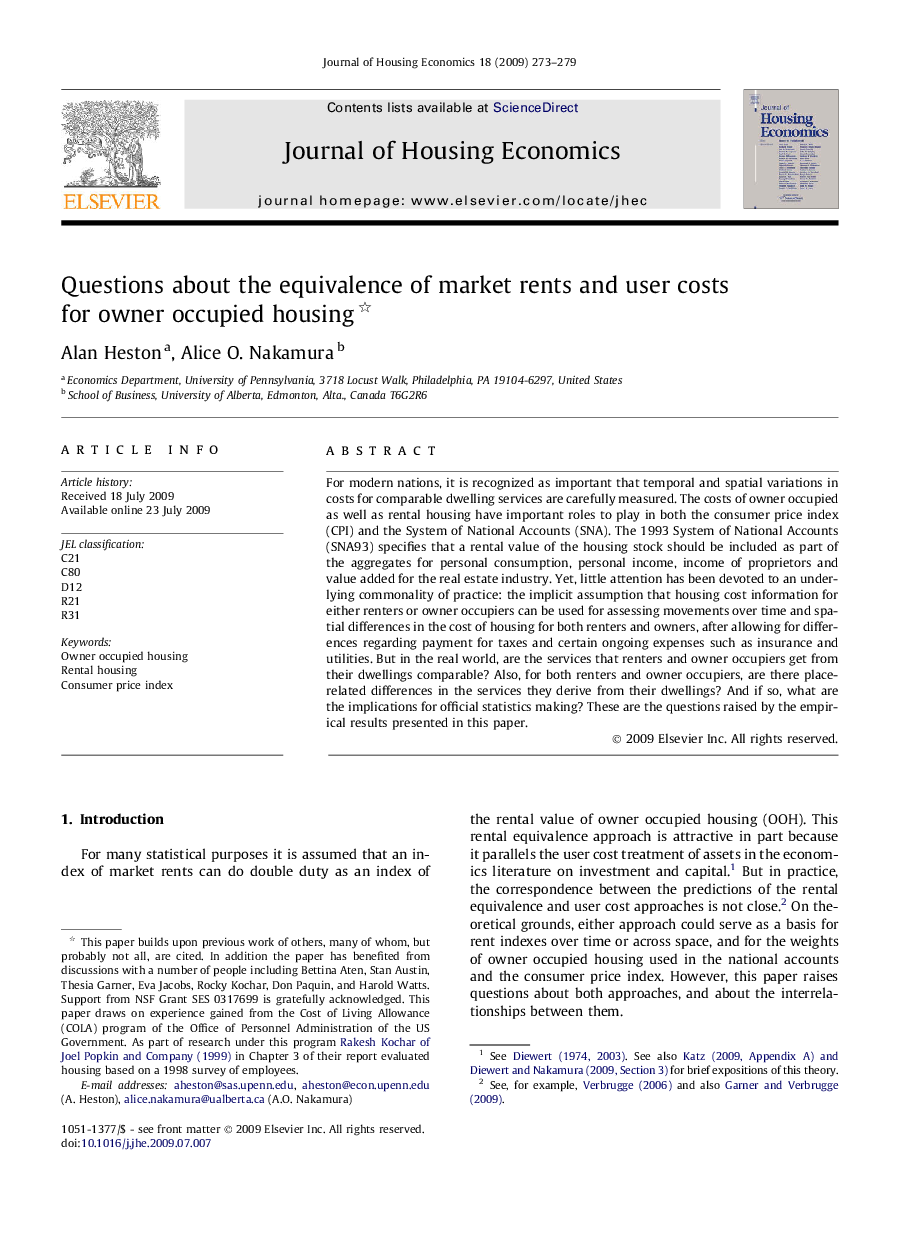| Article ID | Journal | Published Year | Pages | File Type |
|---|---|---|---|---|
| 962138 | Journal of Housing Economics | 2009 | 7 Pages |
Abstract
For modern nations, it is recognized as important that temporal and spatial variations in costs for comparable dwelling services are carefully measured. The costs of owner occupied as well as rental housing have important roles to play in both the consumer price index (CPI) and the System of National Accounts (SNA). The 1993 System of National Accounts (SNA93) specifies that a rental value of the housing stock should be included as part of the aggregates for personal consumption, personal income, income of proprietors and value added for the real estate industry. Yet, little attention has been devoted to an underlying commonality of practice: the implicit assumption that housing cost information for either renters or owner occupiers can be used for assessing movements over time and spatial differences in the cost of housing for both renters and owners, after allowing for differences regarding payment for taxes and certain ongoing expenses such as insurance and utilities. But in the real world, are the services that renters and owner occupiers get from their dwellings comparable? Also, for both renters and owner occupiers, are there place-related differences in the services they derive from their dwellings? And if so, what are the implications for official statistics making? These are the questions raised by the empirical results presented in this paper.
Related Topics
Social Sciences and Humanities
Economics, Econometrics and Finance
Economics and Econometrics
Authors
Alan Heston, Alice O. Nakamura,
